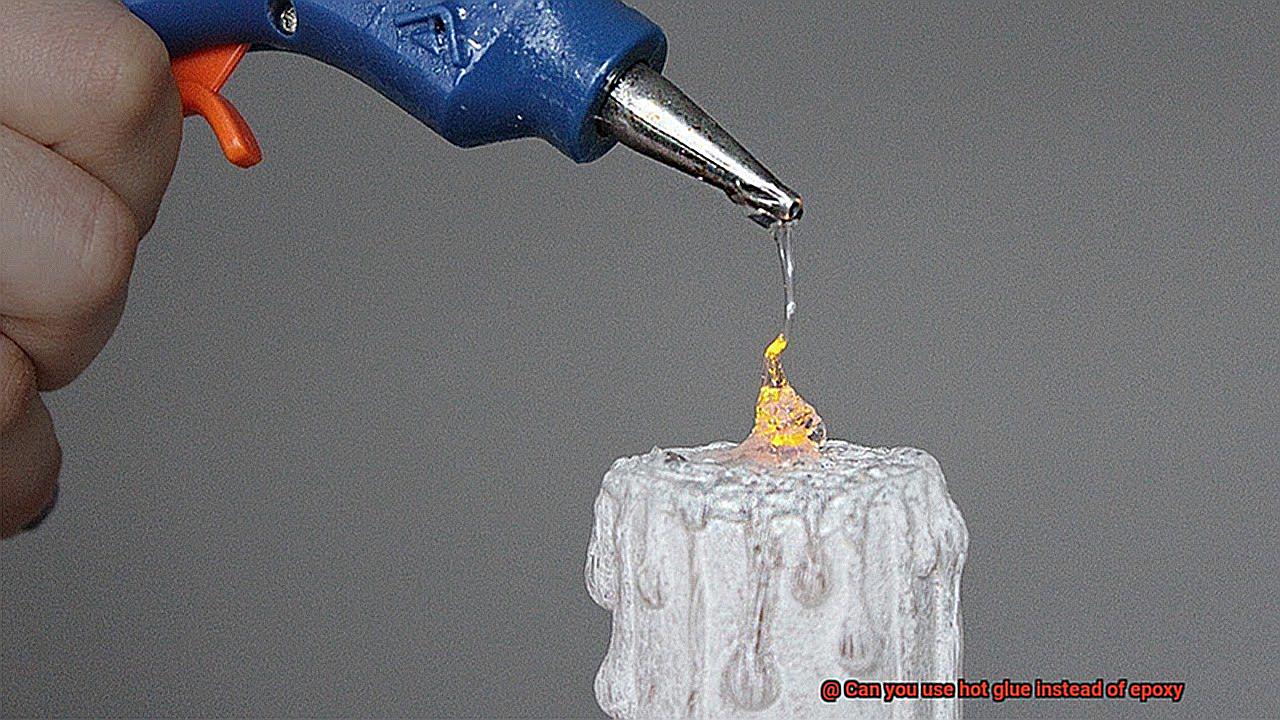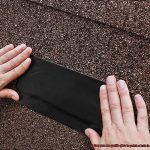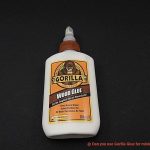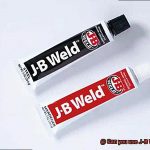Have you ever been in the middle of a DIY project and realized you ran out of epoxy? Or maybe you’re just looking for an alternative to this tried-and-true adhesive. Well, look no further than your trusty hot glue gun. That’s right, hot glue can be used as a substitute for epoxy in certain scenarios, saving you both time and money.
While epoxy and hot glue share similar properties like strength and bonding capabilities, they differ in consistency and drying times. Epoxy is a two-part adhesive that dries hard and can take anywhere from several hours to days to cure fully. Hot glue, on the other hand, dries quickly and remains pliable and soft.
Using hot glue instead of epoxy works best for small, temporary projects such as attaching decorations or creating mock-ups. However, it’s not recommended for high-stress situations or long-term projects where durability is crucial.
Before substituting hot glue for epoxy, consider the size of your project, its durability requirements, and expected lifespan. Additionally, ensure that the materials being bonded can withstand the heat from the glue gun as well as any future stresses it may face.
In summary: hot glue can be an appropriate alternative to epoxy in specific situations. Knowing when and where to use it could save you both time and money without compromising your project’s success.
What is Hot Glue?
Contents
Hot glue is made up of a thermoplastic polymer that is heated up until it melts and becomes a liquid. Once applied to a surface, the glue quickly cools and solidifies, creating a strong bond. It is commonly used in arts and crafts projects, woodworking, and light-duty repairs.
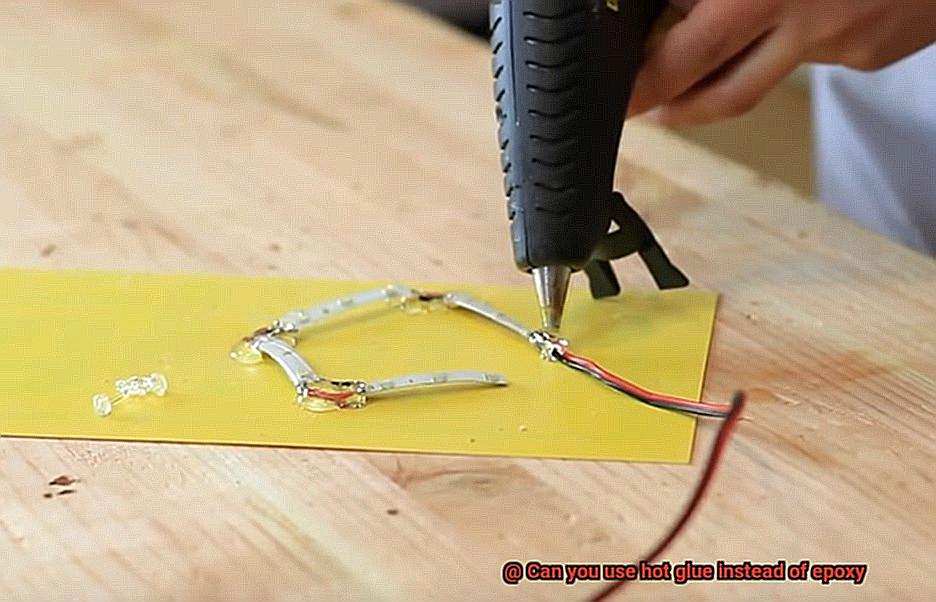
One of the benefits of using hot glue is its quick setting time. Unlike other adhesives that may take hours or even days to fully set, hot glue can set within seconds of application. This makes it a great choice for projects that require a fast turnaround time.
Another advantage of hot glue is its versatility. It can bond to a wide range of materials including plastic, wood, fabric, and metal. This makes it a popular choice for crafting projects such as creating decorations or assembling small objects.
Using hot glue is also easy and convenient. All you need is a hot glue gun and glue sticks. Simply plug in the glue gun to heat up the glue stick until it melts, then apply the liquid glue to the surface you wish to bond.
However, it’s important to note that hot glue may not be suitable for all applications. It is not as strong as other adhesives like epoxy and may not hold up well under heavy stress or extreme temperatures. Additionally, it may not be suitable for use in applications where water exposure is expected.
Despite its limitations, hot glue remains a versatile adhesive that can be useful in many different applications. To ensure a strong and lasting bond, choose the right adhesive for your project at hand.
What is Epoxy?
If you’re searching for an adhesive that can handle the toughest jobs, look no further than Epoxy. This powerhouse adhesive is known for its strength, durability, and resistance to water and chemicals. But what exactly is Epoxy?
Epoxy is a two-part adhesive made up of a resin and a hardener. When mixed together, these components create a chemical reaction that hardens and cures into a super-strong bond. From construction to woodworking to automotive repair, Epoxy is widely used in many different industries due to its versatility.
One of the key advantages of Epoxy over other adhesives is its ability to fill gaps and uneven surfaces. It also has an incredibly smooth finish that can be sanded or machined down to perfection. This makes it perfect for creating polished surfaces or filling in gaps between materials.
Epoxy can bond metals, plastics, ceramics, and even some types of wood. Its durability and strength make it perfect for repairing or building structures where precise alignment is essential. And with its resistance to water, chemicals, and high temperatures, Epoxy is the go-to adhesive for tough bonding jobs that require strength and durability.
Hot Glue vs. Epoxy: Comparison of Properties and Uses
Hot glue and epoxy are two of the most versatile adhesives in the market today, but they have distinct differences when it comes to their properties and uses. As an expert on this topic, let me walk you through the comparison of hot glue vs. epoxy.
Properties:
Hot glue is a thermoplastic adhesive that melts when heated and solidifies when it cools down. It is easy to work with, but it has a lower strength compared to epoxy. Hot glue is best for lightweight projects or temporary bonding, and it is more flexible than epoxy, making it suitable for materials that may expand or contract over time.
Epoxy, on the other hand, is a thermosetting adhesive that requires a chemical reaction to cure and harden. It provides a strong bond that can withstand stress and pressure, making it ideal for industrial applications. Epoxy has higher heat resistance than hot glue, making it suitable for high-temperature applications. It also has better chemical resistance and can withstand exposure to solvents, oils, and acids.
Uses:
Hot glue is commonly used in crafts, DIY projects, and household repairs. It is easy to use and dries quickly, making it a convenient option for small-scale projects. Hot glue can also be used as a sealant or filler for gaps and cracks in surfaces. It is also popular in the fashion industry for attaching embellishments to fabrics.
Epoxy, on the other hand, is preferred for bonding metal, wood, plastic, and other materials in construction, automotive, and aerospace industries. It can be used for structural bonding or filling large gaps in surfaces. Epoxy can also be used as a coating for surfaces that require protection from corrosion or wear. It is also popular in jewelry making for creating durable and long-lasting pieces.
Pros and Cons of Using Hot Glue Instead of Epoxy
When it comes to hot glue and epoxy, both have their unique pros and cons. In this article, we will explore the advantages and disadvantages of using hot glue instead of epoxy.
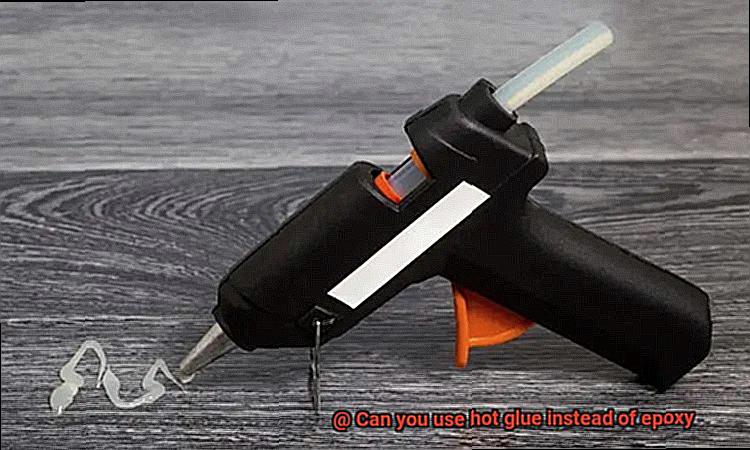
Pros of Using Hot Glue:
Firstly, hot glue is extremely easy to use. Its quick-drying formula and the convenience of a glue gun make it a perfect choice for quick projects or repairs. Secondly, hot glue sticks are widely available and relatively inexpensive, making them ideal if you are on a tight budget or need to buy adhesive in a hurry. Lastly, hot glue dries quickly, allowing you to move on to the next step in your project without any delay.
Cons of Using Hot Glue:
One of the biggest drawbacks of using hot glue is that it is not as durable as epoxy. Hot glue can melt in extreme temperatures and may not hold up well over time if exposed to water or chemicals. Additionally, hot glue can be messy if not applied carefully. It can drip or string when applied, which can be difficult to clean up or remove once dry. Lastly, hot glue may not adhere well to certain materials such as metal or glass.
Ultimately, the decision to use hot glue or epoxy will depend on your specific project needs. If you require an adhesive that is easy to use and dries quickly, then hot glue may be the right choice for you. However, if you need an adhesive that is strong and durable enough to withstand extreme conditions, then epoxy may be a better option.
When to Use Hot Glue Instead of Epoxy
While hot glue and epoxy are both widely used adhesives, each one has its unique characteristics that make them suitable for specific applications. So, when should you use hot glue instead of epoxy?
- Quick bonding: Time is precious, and hot glue sets quickly compared to epoxy, which needs more time to cure. This makes hot glue ideal for projects where you need to bond materials quickly.
- Temporary bonding: Hot glue may not be as strong as epoxy, but it can be easily removed without damaging the materials. This makes it perfect for temporary bonding applications such as holding items in place while you work on them.
- Non-porous surfaces: Hot glue works well on non-porous surfaces such as plastic and glass, whereas epoxy may not bond as effectively.
- Low-temperature applications: Hot glue can be used at lower temperatures than epoxy, making it ideal for applications where heat may damage the materials.

It’s important to note that hot glue may not provide the same level of strength as epoxy, so it may not be suitable for all applications. Consider the materials being bonded, the required strength of the bond, and the environment in which the bonded materials will be used before deciding which adhesive to use.
How to Properly Use Hot Glue as an Adhesive
Hot glue is a versatile adhesive that can bond various materials, making it a popular choice in many industries. However, to ensure a strong and durable hold, it is important to use hot glue properly. Here are five sub-sections to guide you on how to use hot glue properly:
Choose the Right Type of Hot Glue
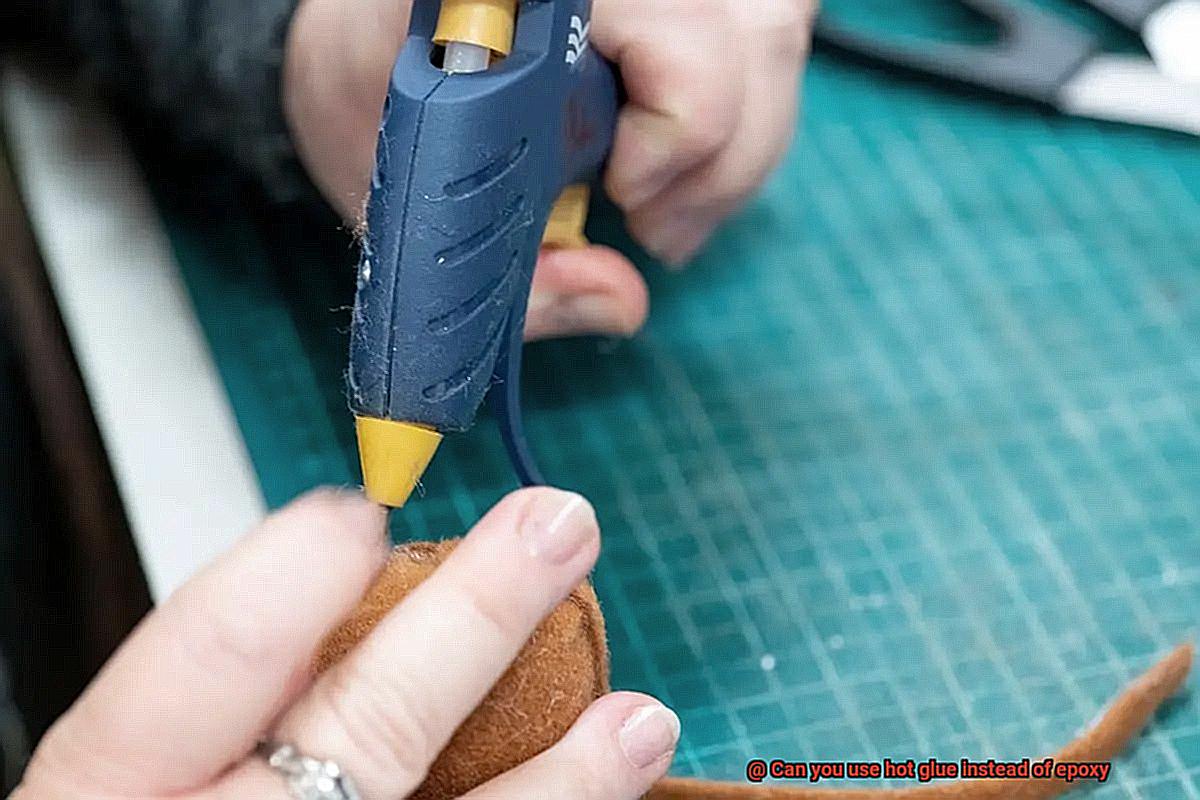
Choosing the correct type of hot glue is crucial for any project. Low-temperature hot glue works best for delicate materials such as foam and lace, while high-temperature hot glue is ideal for heavy-duty applications such as metal and wood. Selecting the wrong type of hot glue can result in a weak bond or damage to your materials.
Prepare the Surface
Proper surface preparation is essential for creating a strong bond. Ensure that the surface you want to bond is clean, dry, and free from dust or debris. You can clean the surface with a dry cloth or sandpaper to remove any dirt that could prevent the glue from adhering correctly.
Apply Hot Glue Carefully
When applying hot glue, use small amounts to prevent it from dripping or spreading beyond the bonding area. Applying too much hot glue can result in a weaker bond. It’s also important to work quickly as hot glue dries rapidly, so you need to apply it evenly and carefully.
Press Surfaces Firmly Together

Once you have applied the hot glue, press the surfaces firmly together while the glue is still warm and pliable. Hold them together until the hot glue sets completely. Avoid moving or disturbing the surfaces while the hot glue is setting, as this can weaken the bond.
Work Quickly
Hot glue dries quickly, so it’s crucial to work quickly when using it. If you take too long to apply it, it can become challenging to work with. Having all of your materials and tools ready beforehand can help speed up the process and ensure that you achieve the desired results.
Tips for Working with Epoxy
Epoxy is a powerful adhesive with exceptional bonding capabilities, making it the go-to choice for tasks that require heavy-duty bonding. However, working with epoxy can be challenging, and without the proper knowledge, you may not achieve the desired results. Here are some tips to help you work with epoxy and ensure a strong and long-lasting bond.
Prepare Your Workspace
Before you start working with epoxy, it’s essential to prepare your workspace. A clean, well-ventilated area free from dust and debris is crucial. Additionally, wear protective gear such as gloves and masks to avoid contact with the epoxy resin. Failing to prepare your workspace can lead to a weak bond or uneven surfaces.
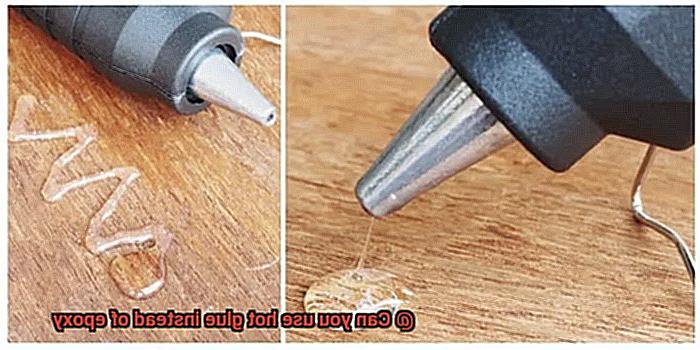
Read the Instructions Carefully
Epoxy is a two-part adhesive that must be mixed in the correct ratio to work correctly. It’s critical to follow the manufacturer’s instructions on mixing the resin and hardener in the appropriate ratios. Also, apply the adhesive within the recommended working time to avoid weak bonds or uneven surfaces. Careful attention to instructions will ensure that you get the best results.
Use the Right Tools
Working with epoxy requires specific tools designed for use with this adhesive. Use a mixing container and stir stick specifically designed for use with epoxy. Using a brush or roller will help apply the adhesive evenly and prevent air bubbles, leading to a strong bond.
Allow Sufficient Curing Time
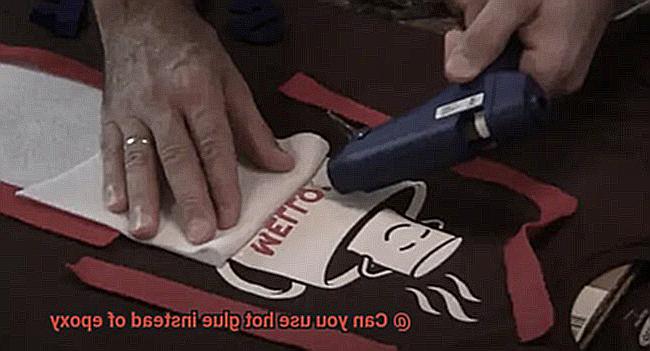
Patience is essential when working with epoxy because it takes time to cure properly. Rushing the curing process can result in weak bonds or even complete failure of the adhesive. Allow enough time for the epoxy to cure before using or handling the bonded object. The curing time will depend on the type of epoxy used and environmental conditions.
Clean and Dry Surfaces
Before applying epoxy, make sure that surfaces being bonded are clean and dry. Any dirt, grease, or moisture can interfere with the adhesive’s ability to bond properly. If necessary, sand or rough up smooth surfaces to provide better adhesion. Clean and dry surfaces will ensure a strong bond.
ri8z1k9Cjw8″ >
Also Read: What is the best glue to stick fabric to wood?
Conclusion
To sum it up, hot glue can serve as a viable substitute for epoxy in certain circumstances. Although both adhesives possess similar bonding abilities and strength, they differ in consistency and drying times. Hot glue dries quickly and remains pliable, making it perfect for small-scale projects such as attaching decorations or creating mock-ups. However, if durability is a crucial factor in your project, hot glue may not be the best choice for long-term projects or high-stress situations.
Hot glue is composed of a thermoplastic polymer that melts when heated and solidifies when cooled down. Its fast-drying formula and the convenience of a glue gun make it user-friendly and ideal for quick fixes or repairs. Nevertheless, it may not be appropriate for all applications since it is not as robust as other adhesives like epoxy and may fail under extreme temperatures or water exposure.
When deciding whether to use hot glue instead of epoxy, take into account factors such as the size of your project, its durability requirements, expected lifespan, materials being bonded, and future stresses the bond may encounter.

